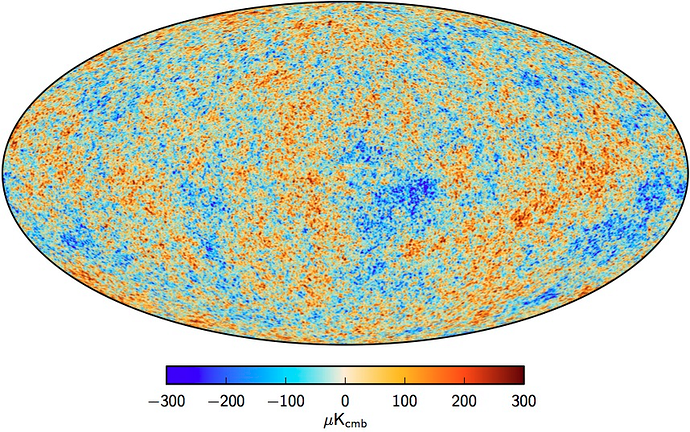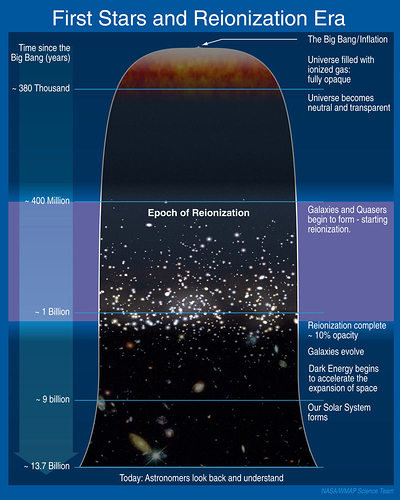In the big bang model, after hydrogen and helium gas were formed, they were still not dense enough for gravitational collapse to begin. My question has two parts:
-
“The Great Gatherer”: Why wouldn’t the hydrogen and helium continue to disperse indefinitely in the absolute vacuum of space, as all gases do in a vacuum? What force or condition could cause these gases to defy their natural tendency and begin to collect together rather than disperse, especially in the stages of the big bang cosmology where no stars or galaxies had yet formed to provide possible physical or gravitational loci for such a gathering of gas?
-
“The Great Collapser”: Conceding the possibility that such gases had formed into clouds rather than dispersed, what forces or conditions might compact such a cloud of gas into a space of sufficient density that gravitational collapse would begin? Such forces or conditions would seem to have to meet two criteria: A) they would have to create a physical “bubble” to physically constrain the gas into a contained space, and the integrity of such a “bubble” would have to be such that it had no points of “leakage” great enough to allow so much gas to escape that density would never reach a critical mass for gravitational collapse, and B) in addition to containing the gas, the “bubble” would have to exert an immense compacting force upon the gas inside it so that the volume of the gas (and, perhaps, the “bubble” itself) would continually decrease, and such a force would have to continually be greater that the ever growing kinetic and thermal forces of the gas itself, which would be fighting continuously against the collapsing “bubble” with increasing pressure for every liter of physical volume that the shrinking “bubble” wants to take away from it.
To me this is the key stage of big bang cosmology, where the chaos created by the “bang” finally started to see the emergence of order and structure. As someone who in the past considered parts of big bang cosmology plausible, I am astonished to find that both secular and Christian sources who believe the universe developed in this way gloss over this problem without providing even a theoretical construct for what could cause primordial gases to behave in the way big bang cosmology needs them to–that is, in direct contradiction to the normal behavior of gases–in order for the structures of our universe to begin forming. All I can find in the many sources I have searched are vague references to “density fluctuations”, which are never defined or described, or to supernova explosions which, even conceding these as a source of forces to contribute to cloud collapse of later stars (there would not have been pre-existing supernovas to aid the formation of the first stars) would certainly further disperse gas rather than compacting it inside a “bubble”.
Thank you!

